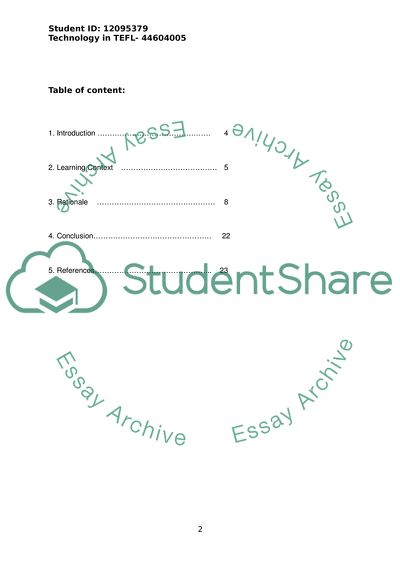Cite this document
(Technology in TEFFL Case Study Example | Topics and Well Written Essays - 4750 words - 1, n.d.)
Technology in TEFFL Case Study Example | Topics and Well Written Essays - 4750 words - 1. https://studentshare.org/education/1827823-rational-for-the-lesson-i-design-by-using-technology-in-teaching-english-power-point-and-hot-potato-software
Technology in TEFFL Case Study Example | Topics and Well Written Essays - 4750 words - 1. https://studentshare.org/education/1827823-rational-for-the-lesson-i-design-by-using-technology-in-teaching-english-power-point-and-hot-potato-software
(Technology in TEFFL Case Study Example | Topics and Well Written Essays - 4750 Words - 1)
Technology in TEFFL Case Study Example | Topics and Well Written Essays - 4750 Words - 1. https://studentshare.org/education/1827823-rational-for-the-lesson-i-design-by-using-technology-in-teaching-english-power-point-and-hot-potato-software.
Technology in TEFFL Case Study Example | Topics and Well Written Essays - 4750 Words - 1. https://studentshare.org/education/1827823-rational-for-the-lesson-i-design-by-using-technology-in-teaching-english-power-point-and-hot-potato-software.
“Technology in TEFFL Case Study Example | Topics and Well Written Essays - 4750 Words - 1”. https://studentshare.org/education/1827823-rational-for-the-lesson-i-design-by-using-technology-in-teaching-english-power-point-and-hot-potato-software.


